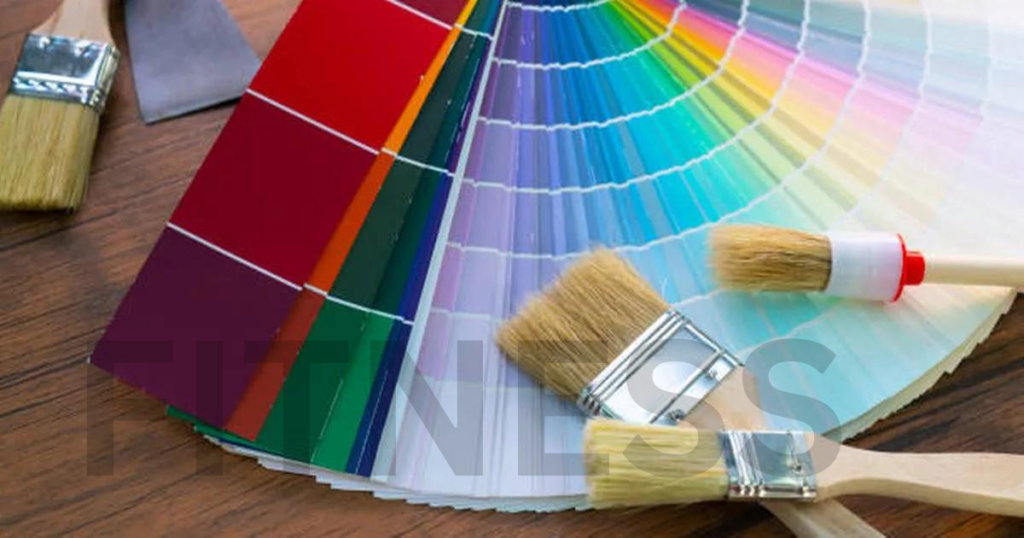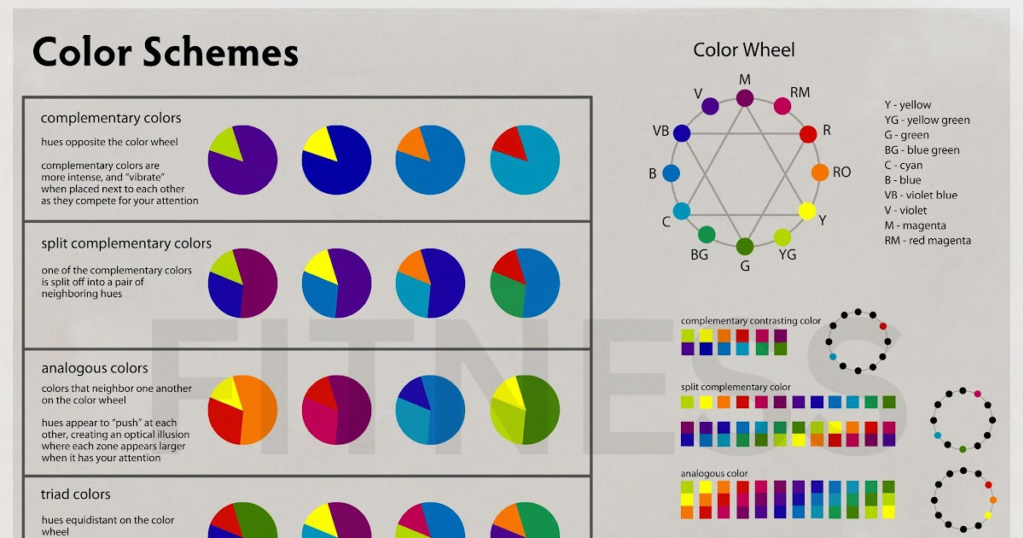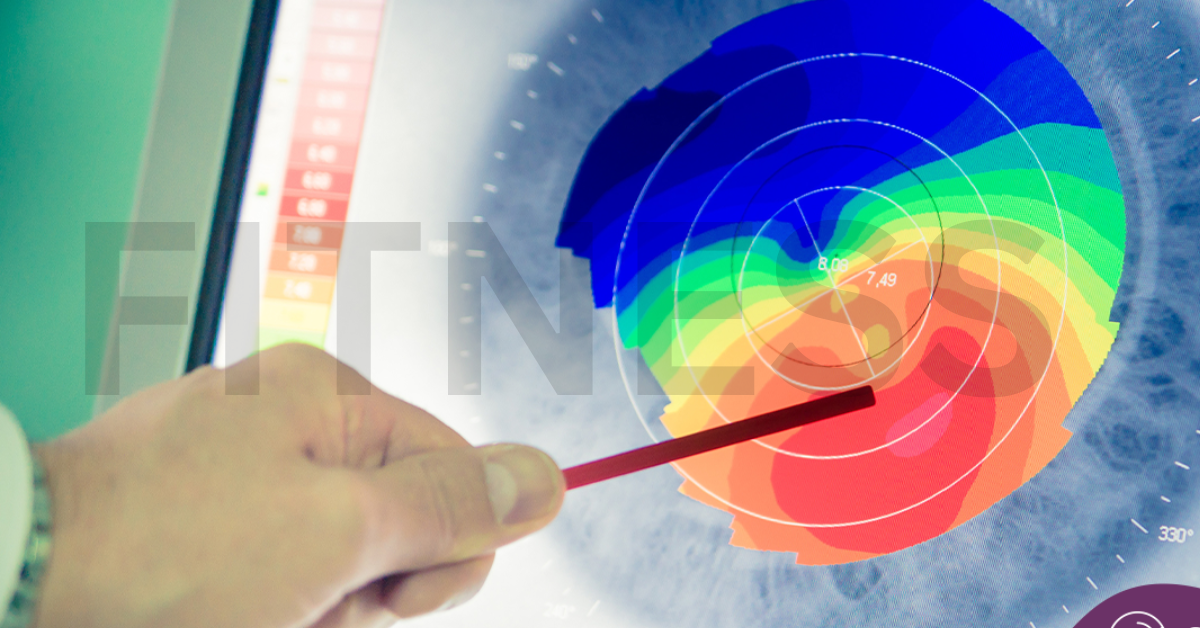Understanding Color Analysis, The basic idea behind knowing the subtleties of color and how it affects how people think and act is called color analysis so which is also called color psychology or theory. This part is meant to give you a short but complete introduction to the idea of color analysis by explaining what it means and how it applies to different fields.
Definition and Purpose
Color analysis is the scientific study of color and its different properties or like hue so brightness and value so to find out how they affect people and groups. Its main goal is to figure out the psychological or cultural and practical effects of using color in different situations. Color analysis looks at the complex relationship between color and human behavior to help us better understand how color choices can make us feel certain feelings so send messages and affect our choices.
Brief Overview of Historical Context
Ancient cultures used colors for religious, social, and cultural reasons, and many of them had hidden meanings. This is where the idea of color analysis comes from. Scholars and artists didn’t start to look into the science principles behind color vision until the 18th and 19th centuries. Modern color theory was built on the work of early thinkers like Sir Isaac Newton and Johann Wolfgang von Goethe. Their ideas led to the creation of the color wheel and the study of color harmony.
As design or psychology so marketing and fashion changed over time so color analysis became an important tool for workers who wanted to use the persuading power of color in their own fields. Today, color analysis is still a lively and multidisciplinary area that is always changing to keep up with new tools or trends and culture shifts.
People who read this introduction will have a basic idea of what color analysis is and how it affects different parts of our lives. By reading on, readers will learn more about the basic ideas behind color theory as well as the psychology and cultural aspects of color. They will also find out how color can be use in real life in a variety of fields. Come with us on this fascinating journey as we figure out the mysteries of color analysis and learn how it affects how we see and act.
Fundamentals of Color Theory
To fully understand the ideas behind color analysis, you need to know the basics of color theory. This part is meant to give readers a strong background in color theory. It talks about important ideas like the color wheel or primary so secondary and tertiary colors and hue so saturation and value.
Understanding the Color Wheel
As you can see, the color wheel shows how different colors relate to each other. It is made up of 12 colors that are group in a circle so with each color being the same distance from the colors next to it. The color wheel is built around the basic colors so which are red so blue and yellow. You can’t make these colors by adding other colors. When you mix two primary colors together in equal parts so you get secondary colors like orange so green and purple. When you mix a primary color with a secondary color so you get tertiary colors like red-orange, yellow-green and blue-violet.
Primary, Secondary, and Tertiary Colors
Primary colors are the building blocks of all other colors. You can’t make primary colors by adding other colors. When you mix equal parts of two primary colors, you get a secondary color. When you mix a primary color with a secondary color so you get a third color. To make color schemes that work well together and get the results you want in design so art and other creative projects so you need to know how these different types of colors relate to each other.
Color Properties: Hue, Saturation, and Value
A color wheel shows the pure spectrum colors, like red, blue, and green. Hue is the word for these colors. Saturation, which is also call chroma or strength so tells you how pure or bright a color is. When it comes to color so colors with high saturation look bright and strong or while colors with low saturation look dull or faded. Value so on the other hand so tells you how light or dark a color is. When artists change the value of a color or they can make differences and give their designs more depth.
By understanding these basic ideas of color theory, readers will have a better understanding of how complicated color is and how it affects how we communicate and present ourselves visually. With this information so readers will be better able to understand and study how color is use in a wide range of settings so from art and design to branding and marketing. We will look at how these basic ideas of color theory are use in real life to change how we see and interact with the world around us in the parts that follow.

Psychological and Cultural Aspects of Color
There are psychological and cultural aspects of color that have a big impact on how people think so feel and act. This part goes into detail about the interesting relationship between color and psychology so as well as the cultural meanings and symbols that come with different colors.
Psychological Impact of Color
Color has an amazing power to make us feel things, remember things, and change the way our minds work. A lot of research has been done by psychologists and experts to find out how colors affect people’s minds and how they act. For instance, warm colors like red and orange make people feel energized so passionate and excited so while cool colors like blue and green make people feel calm so peaceful and relaxed. Knowing these psychological links between colors can help artists or marketers and other professionals use color to make their target audience feel certain feelings and act in a certain way.
Cultural Significance and Symbolism
Color has affects on our minds, but it also has cultural meanings and symbols that are different in each society and culture. Some colors may have deep cultural meanings and be link to certain beliefs practices or social norms. A good example is that in many Western cultures, white means innocence so purity and peace. But in some Eastern cultures, white means death and grief. Additionally, in Chinese society or red is often link to happiness and wealth so while in many Western countries so black is link to sadness and grief. In today’s international world so it’s important to understand these cultural differences in order to connect and communicate with people from different backgrounds.
By looking at the cultural and psychological parts of color so readers will get a better sense of how color affects how people think and act in different situations. With this information, professionals like artists so marketers and others can make visual messages that are more powerful or sensitive to different cultures, and connect with their intended audience. In the next few parts so we’ll look at how these ideas about color psychology and cultural symbolism are use in different fields so from fashion and personal styling to design and marketing.
Color Analysis in Design and Marketing
This part talks about the role of color in graphic design so branding and marketing so looking at how color analysis is use to make effective visual communications and improve brand identity. Color is a powerful tool in design and marketing that can evoke emotions so change people’s perceptions and impact how they act.
Role of Color in Design
In graphic design, color is an important part of getting messages across so arranging information, and setting up visual hierarchy. Designers carefully choose colors to evoke certain emotions so communicate brand attributes and direct the viewer’s attention. For example, bright and contrasting colors can be use to get people’s attention and make them feel excited so while soft and harmonious color schemes can be use to show class and elegance.
Color in Branding and Marketing
Color is a very important part of branding and marketing because it shapes brand personality, builds brand memory, and affects how customers see a product. Companies put a lot of work into making color schemes that work well together so show the values of their brand, and connect with their target audience. For example, Facebook’s signature blue color and Coca-Cola’s bright red color are both quickly recognize and highly link to their names. Color analysis helps marketers use color in a planned way to make people feel certain feelings so make their brand more memorable, and set their goods or services apart from competitors.
Impact of Color on Consumer Behavior
A huge number of studies have shown that color has a big effect on how people act and what they buy. Color choice can affect how people think about a product’s quality so how much it costs and how the business is perceive. In the food business so for example so warm colors like red and yellow are often use to make people hungry and get their attention. On the other hand or cool colors like blue and green are often use to show trust and dependability so which makes them popular choices for banks and health care brands. By doing in-depth color analysis and learning about the cultural and psychological meanings of different colors so marketers can make more convincing and effective ads that reach their target audience and get the results they want.
By looking at how color is use in marketing and design so readers will understand how color analysis is used to make strong brand identities and visually appealing communications. In the parts that follow so we’ll talk more about how color analysis can be use in fashion and personal styling. We’ll look at how color choices can affect a person’s style tastes and make them look better.
Color Analysis in Fashion and Personal Styling
Color is an important part of fashion and personal style because it affects how people see themselves and others. The significance of color in fashion, the basics of color analysis for personal style, and tips for picking colors that make you look better are all covered in this part.
Importance of Color in Fashion
Color is a big part of fashion because it makes things look interesting, shows off your unique style, and makes fashion statements. The colors we wear can say many things about us, from being bold and sure of ourselves to being subtle and classy. Color schemes are carefully chosen by fashion designers to bring out certain themes, feelings, and looks in their lines. People also use color to show who they are, how they feel, and what culture they are from through the clothes they wear.
Color Analysis for Personal Style
Color analysis, which is also called color advice or color profile, helps people figure out which colors look best with their skin tone, hair color, and eye color. When people know about the unique properties of their colors, they can choose clothes and items that bring out their best features and go with their personal style. Color analysis usually includes finding out if a person has warm or cool undertones and then choosing the best color palette for them based on these findings.
Choosing Flattering Colors
It’s important to think about things like skin tone, hair color, eye color, and personal tastes when picking colors that look good on you. Earthy colors like peach, pink, and olive green may look best on people with warm undertones. On the other hand, blue, purple, and gray may look better on people with cool undertones. Trying out different color choices and seeing how they look on different skin tones can help people find the best color scheme for their clothes, makeup, and accessories.
By using color analysis in their personal dressing, people can improve how they look generally, feel more confident, and put together outfits that look good together and show off their individual style and tastes. The parts that follow will talk about the tools and methods used for color analysis, as well as how they can be use in design projects, marketing efforts, and other creative activities.
Tools and Techniques for Color Analysis
A lot of different tools and methods are used in color analysis to properly evaluate, understand, and use color theory concepts. This part talks about the different ways to do color analysis and the tools and resources that are out there, such as old-fashioned methods, new software tools, and psychological tests.
Color Analysis Methods
In traditional color analysis, a person’s skin tone, hair color, and eye color are look at to find out their undertones and find color schemes that look good on them. One of these ways is to put different-colored fabric pieces against the person’s face and watch how they make their natural features look better or worse. A different way is to use color analysis charts or seasonal color systems to put people into specific color groups, like “spring,” “summer,” “autumn,” or “winter,” based on the colors they have.
Color Analysis Software
In the past few years, improvements in technology have led to the creation of many color research software tools and apps. A lot of the time, these software tools use algorithms and image processing to look at digital pictures of people and suggest color schemes that look good with their skin tone, hair color, and eye color. Some popular color analysis programs let users share pictures and get color suggestions that are unique to them and their tastes.
Color Psychology Tests
Color psychology tests, along with standard color analysis methods and software tools, can tell you a lot about a person’s color tastes and psychological links with colors. This kind of testing usually involves showing people a bunch of colors and asking them to connect each color with a different feeling, trait, or idea. Researchers and practitioners can learn more about how color affects people’s minds and how it changes their behavior by looking at the trends and connections in how different people react.
Color analysis with these tools and methods can help people learn more about their own color preferences and find the most flattering color combinations for their clothes, makeup, and accessories. Color analysis can also help designers, marketers, and other professionals make products, ads, and brand identities that are more visually appealing and emotionally powerful. We will talk about how color analysis can be use in design projects, fashion styling, marketing campaigns, and other creative activities in the sections that follow.
Practical Applications of Color Analysis
There are many useful uses for color research in many fields, such as design, fashion, marketing, and more. In this part, we’ll look at how color analysis is use in real life, giving examples from design projects, fashion styles, and marketing efforts.
Using Color Analysis in Design Projects
Color analysis is an important part of graphic design, building, and interior design for making places that look good and work well. Color analysis helps designers choose color choices that improve the user experience, show off the brand, and make people feel the way they want them to. In web design, for instance, color analysis helps artists pick colors that make sites easier to read, navigate, and get to. Color analysis helps interior designers choose the right wall colors, furniture fabrics, and artistic accents to make rooms that look good and feel warm.
Implementing Color Analysis in Fashion
Stylists, fashion designers, and personal shoppers who work in the fashion business use color analysis to make clothes that look good on everyone. Stylists can help their clients find clothes and items that go well with their skin tone, hair color, and eye color by knowing what those colors are. Color analysis helps fashion designers make sets that appeal to their target audience and follow the latest fashion trends. Individualized personal shoppers use color analysis to help clients choose clothes that bring out their best features and match their individual style tastes.
Applying Color Analysis in Marketing Campaigns
Color analysis is used in marketing and advertising to make images that get people’s attention, make them feel certain things, and get brand messages across clearly. Colors are carefully chosen by marketers for logos, ads, and packages to get people’s attention, help people remember brands, and change how people think about those brands. For instance, fast food chains often use the colors red and yellow in their logos to make people hungry and give them a feeling of urgency. Some beauty brands use soft pastel colors to show that they are classy and elegant. By analyzing colors, marketers can choose which colors will best connect with their target audience and help them reach their marketing goals.
Professionals in many fields can make designs, goods, and marketing efforts that are more visually appealing, emotionally powerful, and effective by using color analysis in their work. In the parts that follow, we’ll talk about the difficulties and things to think about when doing color analysis, as well as the latest developments and trends in the field.
Challenges and Considerations
Color analysis can give you useful information and help you in real life, but it also has some problems and things you need to think about. This part talks about some of the problems with color analysis, how to fix them, and some moral issues that come up when you use it.
Limitations of Color Analysis
One of the main problems with color research is that it is bias. How people see and understand colors can be affect by their personal tastes, cultural backgrounds, and life events. The accuracy of color research data can also be affect by things like lighting, watching devices and color correction. Also, methods for analyzing colors might not always take into account how complicated human sight is and how colors change over time.
Overcoming Challenges
Color analysts can work around the problems with the method by using different techniques and best practices. This could mean using more than one color analysis method to check results and make sure they are correct. Also, doing color analysis in controlled settings with consistent lighting can help make sure that the results are consistent and correct. Working with groups of people from different fields, like scientists, artists, and technologists, can help you see color analysis problems from different angles. Color theory and analysis methods can be learn over and over again, which can also help professionals keep up with the latest changes and improvements in the field.
Ethical Considerations
It is important to think about the social issues and possible outcomes when using color analysis in design, marketing, and other settings. For instance, using color analysis to change how people think about something or to play on cultural assumptions can cause harm and backlash that wasn’t meant. In the same way, depending only on automatic color analysis tools without human monitoring can make biases worse and make inequality worse. When people use color analysis to help them make decisions, they need to follow social rules like being honest, fair, and respectful of differences. Color analysis practitioners can improve the efficiency and morality of their work by recognizing and dealing with these problems and issues. In the parts that follow, we’ll talk about how color analysis will change in the future and how it will be use in different fields and situations.

Future Trends in Color Analysis
As technology improves and people’s ideas about the world change, the field of color research also changes in big ways. This part looks at how new culture ideas, scientific advances, and rising trends are affecting the future of color research in many different fields.
Technological Advancements
Artificial intelligence, machine learning, and improvements in digital images are changing the area of color research in big ways. With the help of advanced formulas and software tools, it is now possible to examine huge amounts of color data very quickly and accurately. For instance, machine learning algorithms can automatically sort pictures into groups based on color traits and find trends in how people of different ages and backgrounds like to use color. Wearable tech with color monitors and photos can also give real-time feedback on color decisions and how they affect a person’s mood and look.
Evolving Cultural Perspectives
As communities become more varied and linked, so do the ways that different cultures see color. More and more people are becoming aware of how important it is for color analysis to be sensitive to different cultures and include everyone. More and more, designers, marketers, and other professionals are using color choices and visual messages that reflect different national views. This means taking into account the traditional meanings and symbols that different colors hold in different places and groups. People are also becoming more interested in using traditional color schemes and tribal knowledge systems as sources of ideas for modern design and art.
Integrating Color Analysis in Various Industries
Color analysis is being use more and more in many fields and situations, from education and healthcare to fun and more. The color analysis tools and methods are used in healthcare to improve diagnoses so make patients’ situations better, and help with mental health treatments. That Color analysis is used in education to make learning spaces that are welcoming to everyone and to help with individualize teaching. Color analysis is being use in entertainment to make virtual reality and augmented reality encounters more engaging.
Color analysts can take advantage of new chances and deal with changing problems in their fields by keeping up with these new color analysis trends and developments. The future of color analysis will be lively, cross-disciplinary, and full of interesting prospects as technology keeps getting better and cultural views keep changing. In the parts that follow, we’ll go over some of the most important points and stress how important it is to keep learning and researching in the field of color analysis.
Conclusion
Summary of Key Points
We’ve looked into the many aspects of color analysis in this piece,
including its basic ideas, real-world uses, and possible future directions. We started by talking about the idea of color analysis and how important it is for understanding
how people use in psychological, cultural, and useful ways. After that, we looked at the basics of color theory, such as the color wheel, primary, secondary, and tertiary colors, and hue, saturation, and value. After that, we talked about the cultural and psychological parts of color, as well as how it is use in design, marketing, fashion, and personal style. We also talked about the different tools and methods used for color analysis, as well as the problems and things to think about when using them. Lastly, we looked at what the future holds for color analysis in terms of trends and progress. These included new technologies, changing cultural views, and uses that span different fields and businesses.
Importance of Continued Research and Understanding
As we wrap up this piece, it’s important to stress how important it is to keep learning and researching in the area of color analysis. Even though we’ve talked about a lot of different topics and ideas, there is still a lot to learn and discover about color and how it affects how we see and act. We can find new uses and ideas for color analysis in the years to come by encouraging partnerships between different fields, valuing variety, and taking advantage of technology progress.
Final Thoughts
Color analysis is still a useful skill for communicating, expressing yourself, and being creative in a world that is becoming more visible and linked. Color can be use strategically to make people feel things, send messages and change situations in deep ways, whether it’s in design, marketing, fashion, or another field. We can use color to its fullest potential to have useful and important relationships with the world around us if we use the principles of color analysis with care, imagination, and moral honesty. As time goes on, let’s keep looking into new ideas, coming up with new ways to do things, and working together to find the endless ways that color analysis can help us shape our future.
FAQs (Frequently Asked Questions)
What is color analysis.
Color analysis, which is also called color psychology or color theory, is the scientific study of color and its different properties, like hue, brightness, and value, to find out how they affect how people think, act, and communicate.
Why is color analysis important.
Color analysis is important because it helps people and pros in many fields, like fashion, design, and marketing, choose the right colors to make people feel certain feelings, send messages, and reach their goals.
How is color analysis applied in design and marketing.
Color analysis is used in design and marketing to make messages that are visually appealing and have an effect, to build brand identity, and to change how people act. Color analysis helps designers and marketers choose color schemes that will appeal to their target audience and show off the qualities they want their brand to have.
What tools and techniques are used for color analysis.
For color analysis, people use a range of tools and methods, from old-fashioned ones like arranging fabric pieces and color analysis charts to newer ones like software and color psychology tests. These tools help people and businesses figure out what colors people like, how well they go together, and what psychological links colors have.
What are the future trends in color analysis.
New technologies like machine learning algorithms and smart devices, as well as changing cultural views and cross-disciplinary uses in many different fields, will shape the future of color analysis. Color analysts can take advantage of new possibilities and deal with new problems by keeping up with these trends.


